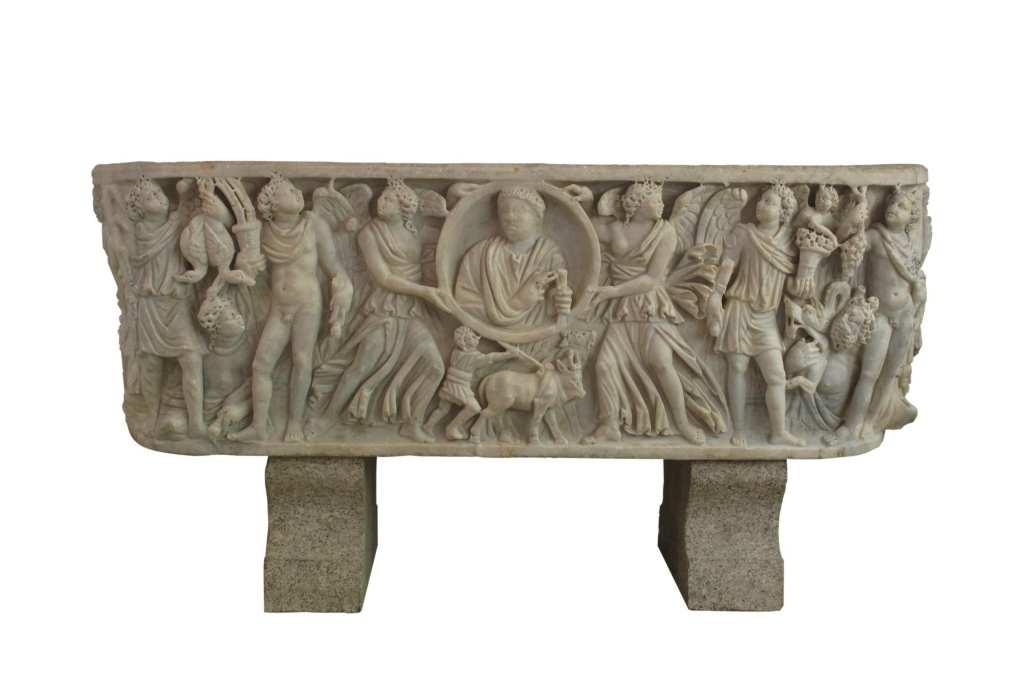
3rd – 4th century AD
Marble carved in low-relief
Inventory sheet
This Roman sarcophagus was discovered in 1840 at Monte da Azinheira in Reguengos, in the region of Évora. Its iconography seems to have a religious meaning, related to the mystery of existence after death. In fact, the evocation of the cult of Bacchus, through symbols of grape picking and wine presses, suggests the pleasures of an afterlife.
The sarcophagus features a low-relief frieze alluding to the Four Seasons of the Year around a central medallion with the portrait of the recipient holding a volumen – the symbol of the municipal magistracy. This medallion is supported by two winged victories, in turn flanked by the Genii of the Seasons. To the left, a young man personifies spring, while hunting birds symbolise autumn. To the right, flowers and fruit allude to summer and winter is represented by an old man with a beard. At the far ends of the chest are a shepherd playing the Pan Flute and young men treading grapes in a vat.
